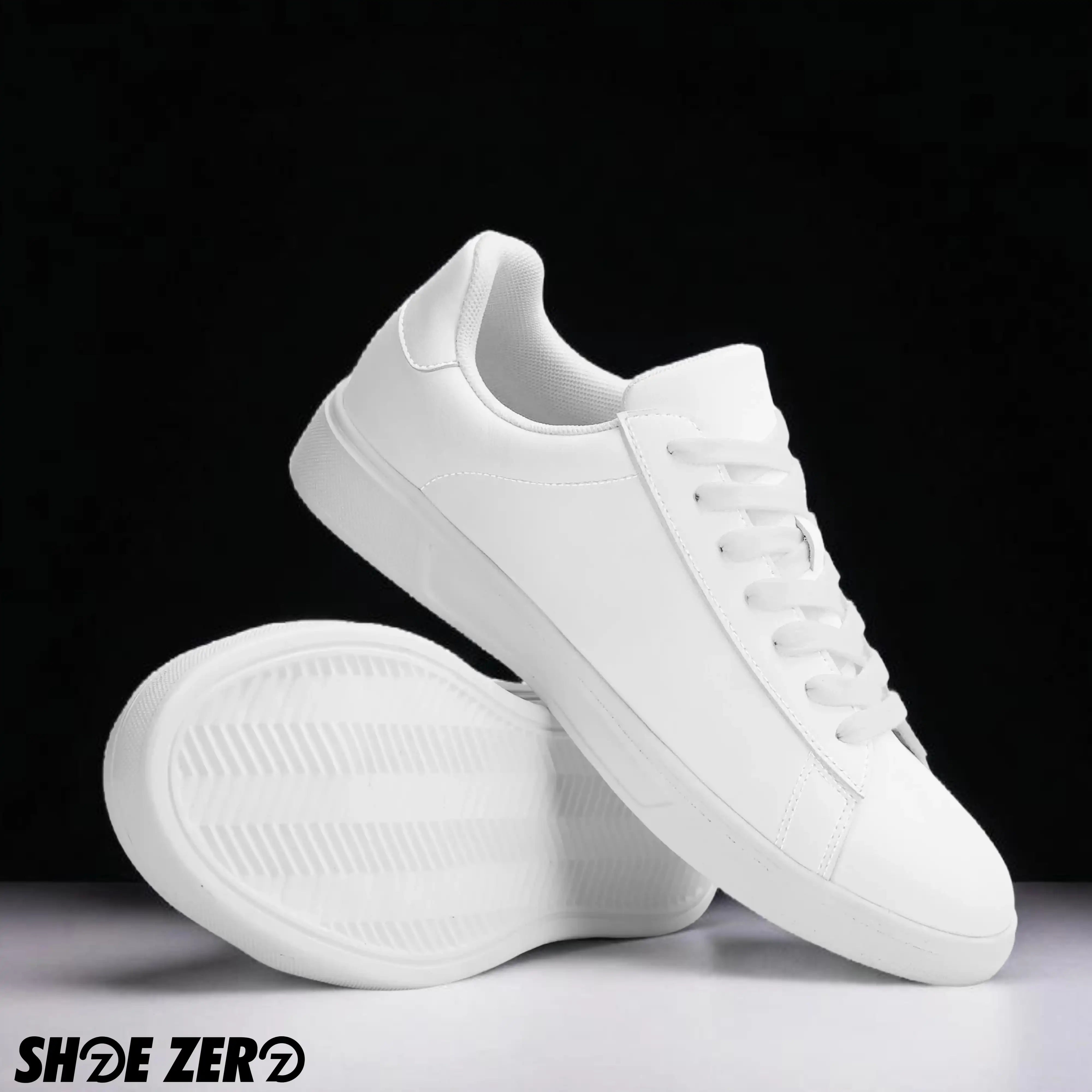When it comes to keeping our shoes clean and looking brand new, sometimes regular cleaning methods just don't cut it. That's where bleach can come to the rescue. Bleach is a powerful disinfectant and stain remover that can be incredibly effective when used correctly. In this comprehensive guide, we'll walk you through the process of using bleach on your shoes to restore their original shine. Read on to discover the dos and don'ts, safety precautions, and step-by-step instructions for using bleach on your shoes.
I. Gathering Materials You'll Need
Before you embark on the journey of restoring your white shoes to their former glory, it's essential to gather all the necessary supplies. Here's what you'll need:
1. Bleach:
Select a suitable chlorine bleach for fabric or a gentle oxygen bleach for more delicate materials. The right choice ensures effective cleaning without damaging your shoes.
2. Water:
Water is your ally for diluting bleach and rinsing the shoes. It's a fundamental component of the cleaning process.
3. Brush or Sponge:
Equipped with a soft brush or sponge, you'll be able to apply bleach evenly, targeting stubborn stains and dirt.
4. Rubber Gloves:
Safeguard your hands from the potentially harsh effects of bleach by donning a pair of rubber gloves. Protection is key.
5. Mask:
Especially when working in enclosed spaces, a mask acts as a barrier against inhaling bleach fumes, ensuring your safety throughout the process.
6. Old Newspapers or Plastic Sheets:
Prevent bleach splatters from damaging your workspace by covering it with old newspapers or plastic sheets.
7. Bowl or Container:
You'll need a container to mix the bleach with water, creating the ideal solution for cleaning your shoes.
II. Preparing the Bleach Solution
Before applying bleach to your white shoes, it's crucial to prepare the solution properly. Bleach is a powerful chemical that can cause damage or discoloration if not diluted correctly. Follow these steps to prepare the bleach solution:
- Fill a small bowl with water.
- Add bleach to the water according to the recommended ratio. Generally, it's best to use one-part bleach to five-part water.
- Mix the solution thoroughly.
Remember to wear gloves and protect your skin while handling bleach. It's also recommended to work in a well-ventilated area to avoid inhaling the fumes.

III. Spot Test the Bleach Solution
Before applying the bleach solution to your white shoes, it's essential to perform a spot test on a small, inconspicuous area of the shoe. This test will ensure that the bleach solution does not damage or discolor the material of your shoes.
To perform the spot test, mix a small amount of the bleach solution and apply it to a hidden area of the shoe, such as the inner side of the tongue. Use a cotton swab or a small brush to apply the solution and make sure it's evenly distributed. Wait for a few minutes and then rinse the area with water and let it dry.
If no damage or discoloration occurs, proceed with using the bleach solution on your shoes. If you notice any negative effects, do not use the bleach solution and opt for an alternative cleaning method.
IV. Apply the Bleach Solution
Now that you have prepared the bleach solution, it's time to apply it to your white shoes. You can use either a brush or a cloth to apply the solution, depending on your preference.
Start by dipping the brush or cloth into the solution, then gently scrub the shoes in circular motions. Be careful not to apply too much pressure, as this can damage the material.
If you notice any particularly stubborn stains, you can apply more bleach solution to those areas and give them some extra attention. Just be sure to rinse the shoes thoroughly afterward to remove any excess bleach.
After you have cleaned the entire shoe, rinse it thoroughly with water to remove any leftover bleach residue. You can use a clean cloth or towel to help dry the shoes, or let them air-dry naturally.
Remember, it's important to remove all of the bleach residue to prevent any discoloration or damage to the shoes. Take your time to ensure that you've rinsed them thoroughly before moving on to the drying process.
V. Rinse and Dry the Shoes
After applying the bleach solution to the shoes, it's crucial to rinse them thoroughly to remove any bleach residue. Leaving bleach on the shoes can cause discoloration or damage to the material over time.
To rinse the shoes, use a clean cloth or sponge dampened with water to wipe away any remaining bleach solution.
Once you've finished rinsing the shoes, gently squeeze out any excess water and leave them to dry.
It's best to air-dry the shoes naturally, avoiding direct sunlight or high heat, as this can cause the material to warp or fade.
To speed up the drying process, you can stuff the shoes with crumpled newspaper to help absorb any moisture.

How Should You Dry White Sneakers?
Air Drying Rule:
Regardless of the material, the best way to dry white sneakers is to let them air dry. Avoid direct heat sources like radiators or hair dryers, as these can cause warping, discoloration, or even shrinkage. Stuffing the shoes with paper towels can help them retain their shape as they dry.
Handling Bleach Safely
When using bleach to clean white shoes, it is important to take safety precautions to avoid any skin or eye irritation. Bleach is a powerful chemical that can cause harm if not handled properly. Here are some tips to ensure safe handling:
- Wear gloves to protect your skin from coming into contact with the bleach solution.
- Work in a well-ventilated area to minimize inhaling bleach fumes.
- Keep bleach away from your eyes and mouth.
- If any bleach solution gets onto your skin or in your eyes, flush with water for at least 15 minutes.
- Store bleach in a safe and secure location away from children and pets.
By taking these safety precautions, you can effectively clean your white shoes without any harm to yourself or others.
How to Clean White Mesh Shoes with Laundry Detergent
Brush Away Dirt:
Start by gently brushing away loose dirt and debris from the surface of the shoes. This initial step makes the subsequent cleaning more effective.
Clean Shoes with Soapy Water:
Prepare a mixture of mild laundry detergent and water. Dip a soft brush or sponge into the soapy solution and gently scrub the mesh fabric. Focus on areas with visible stains or discoloration.
Rinse Shoes and Let Dry:
Thoroughly rinse the shoes with clean water to remove any remaining detergent. Allow the shoes to air dry in a well-ventilated area, avoiding direct sunlight as it can cause discoloration.
How to Clean White Leather Shoes
White leather shoes require a slightly different approach due to their material's sensitivity. Here's how to do it:
Gentle Cleaning Solution:
Mix a small amount of mild soap with water to create a gentle cleaning solution. Dampen a soft cloth with the solution and wipe down the leather surface to remove dirt and stains.
Rinse and Dry:
Dampen another cloth with clean water and wipe away any soap residue. Pat the shoes dry with a clean towel and let them air dry naturally. Avoid using direct heat sources as they can damage the leather.
Cleaning White Shoes with Toothpaste
Toothpaste Hack:
Toothpaste can be surprisingly effective in removing scuffs from white shoes. Apply a small amount of white, non-gel toothpaste to a soft cloth and gently rub it over the scuffed area. Wipe away the toothpaste residue with a clean, damp cloth.
Can You Put White Sneakers in the Washing Machine?
Machine Washing Caution:
While it might be tempting to toss your white sneakers into the washing machine, this method is not recommended for all types of shoes. Canvas sneakers can often handle a gentle machine cycle in a mesh bag, but leather and delicate materials should be cleaned using more controlled methods to avoid damage.
What is the Best Method for Cleaning White Sneakers?
Material Matters:
The best cleaning method depends on the material of your white sneakers. Canvas and mesh can tolerate mild soap and water, while leather needs a gentler touch. Always follow the manufacturer's recommendations for cleaning to ensure longevity.
When Cleaning White Sneakers, Are There Different Methods for Different Materials?
Tailored Approach:
Yes, different materials require different cleaning methods. As mentioned, canvas, mesh, and leather each have their own specific cleaning requirements. Adapting your approach to the material helps maintain the shoes' appearance and integrity.
__________________________________________________
Key Takeaways
Bringing back the pristine white appearance of your shoes is a rewarding process. Properly using bleach as a cleaning agent, selecting the right method for your shoe's material, and allowing them to air dry ensures that your sneakers remain both stylish and long-lasting. Remember to always prioritize safety and follow manufacturer guidelines for the best results.
FAQs (Frequently Asked Questions)
1. Can I use bleach on colored shoes?
Using bleach on colored shoes is not recommended, as it can cause fading or discoloration. Stick to gentler cleaning methods for colored footwear.
2. How often should I clean my white sneakers?
The frequency of cleaning depends on how often you wear your sneakers and the conditions they are exposed to. As a general rule, regular spot cleaning and occasional thorough cleaning are advisable.
3. Are there alternative cleaning agents to bleach?
Yes, there are alternative cleaning agents like hydrogen peroxide, baking soda, or specialized shoe cleaners that can be effective in cleaning white shoes.
4. Can I speed up the drying process with a fan?
While a fan can help circulate air and expedite drying, it's still best to rely on natural air drying to prevent any potential damage to the shoes.
5. How do I prevent yellowing of white sneakers?
To prevent yellowing, avoid exposing your white sneakers to direct sunlight for extended periods and keep them away from heat sources. Store them in a cool, dry place when not in use.






